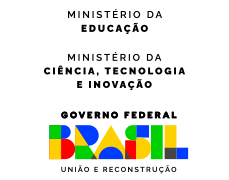22º CBM - Palestras Plenárias
Serão palestras dadas por pesquisadores considerados de grande destaque em suas áreas. Destinam-se a dar uma visão ampla do tema escolhido, os problemas em aberto, as grandes linhas de pesquisa e suas perspectivas.
São destinadas a todos os participantes. Os matemáticos que proferirão estas palestras serão:
Harmonic Analysis and Group Representations
James Arthur, Univ. of Toronto, Canadá
Abstract:
The theory of infinite dimensional group representations has roots in nineteenth century algebra and analysis, through finite groups and classical Fourier analysis. However, it really belongs to the latter half of the twentieth century. It is largely the creation of one person, Harish-Chandra. The theory now has an influence on many aspects of present day mathematics. For example, it is the foundation of the analytic side of the Langlands program, which attempts to relate fundamental data that come from arithmetic with equally fundamental data from analysis. The lecture will be a survey of some of the main ideas from the representation theory of reductive groups. We shall try to motivate the discussion from Harish-Chandra’s perspective of harmonic analysis, which he regarded as a general principle of duality between geometric objects and spectral objects. We shall also describe some of the current problems in the are and, time permitting, their relations with number theory and the Langlands program.
The Impact of Quantum Theory on Mathematics
Michael Atiyah, Univ. of Edinburgh, UK
Abstract:
The past two decades have witnessed a remarkable turn-round in the relation between mathematics and physics. The traditional role of mathematics as providing the concepts and techniques of theoretical physics has been reversed. A wealth of ideas and results from quantum theory have flooded into mathematics with spectacular consequences. I shall review the story with simple illustrative examples.
The mathematics of shuffling cards
Persi Diaconis, Stanford University, USA
Abstract:
I will show it takes seven ordinary riffle shuffles to mix up 52 cards. The analysis leads to combinatorics (the descent algebra), Topology (Hodge decompositions and buildings) and symmetric function theory.
Quantum integrable systems on 2-dimensional discrete space-time
Ludwig Faddeev, Russian Academy of Sciences, Russia
Abstract:
The infinite dimensional integrable models, described by evolutional equations in two dimensional space-time, were subject of intensive research during last 30 years. Recently by means of the proper discretization of the space-time their finite-dimensional analogues were found. In the talk the quantum version is investigated. The main result is an explicite construction of the one-step time evoluttion automorphism. Some relevant questions of the fuctional analisys are discussed.
Enumerating singular curves on surfaces
Steven Kleiman, Mass. Inst. of Technology, USA
Abstract:
We’ll discuss a nineteenth century problem of current interest: the enumeration of the r-nodal curves cut out of a smooth projective surface by the hypersurfaces of degree d. We require the curves to pass through enough points in general position so that the number of curves is finite. Then this number is given by an explicit universal polynomial in four basic Chern numbers, at least if r <= 8 and d >= 3r. A similar statement is true as well for the curves of any other equisingularity type. To justify the enumeration, we’ll see that the curves of a given type form a reduced set of the expected dimension.
Symplectic Topology Today
Dusa McDuff, SUNY, Stony Brook, USA
Abstract:
The talk gives a general overview of symplectic topology and mentions some of the problems that are currently of most interest
From moduli space to renormalization
Curtis McMullen, Harvard University, USA
Abstract:
Unlike complex manifolds of higher dimension, Riemann surfaces can survive surprisingly radical surgery. This talk will present applications of surgery to the differential geometry of the moduli space, and to the renormalization of dynamical systems such as f(x) = x2 + c.


